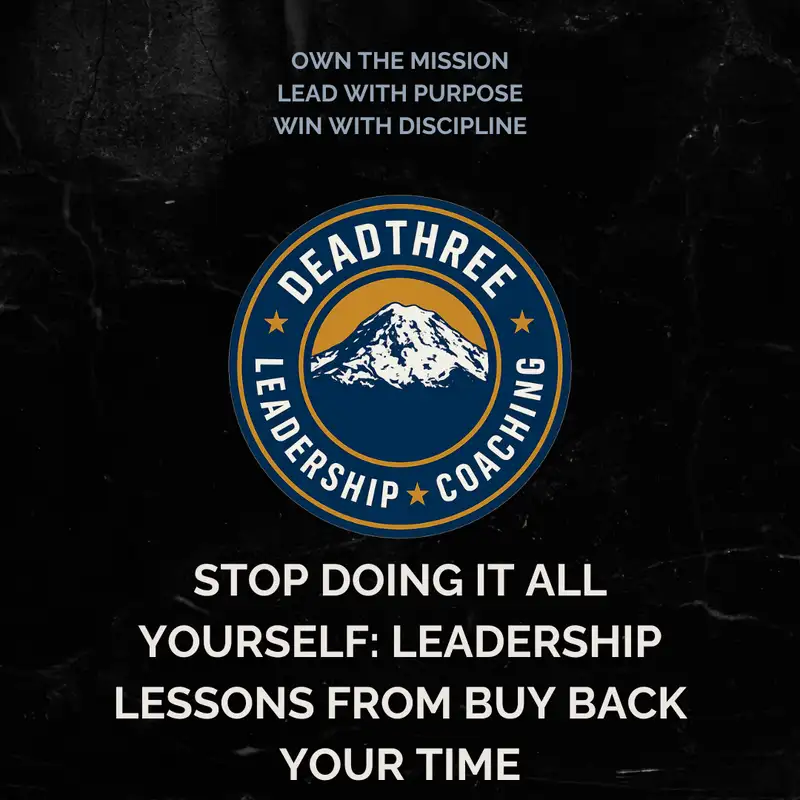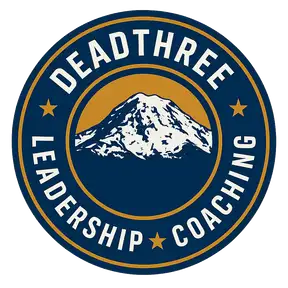Stop Doing It All Yourself: Leadership Lessons from Buy Back Your Time
Download MP3What happens when you try to lead, build, sell, strategize, and “just handle it” all by yourself? In this episode, I break down how Dan Martell’s book Buy Back Your Time quietly doubles as one of the most important leadership books you can read—especially if you’re a leader who’s stuck in the loop of doing instead of leading.
I unpack why leadership without structure always ends in burnout, why so many leaders keep saying, “I’ll just do it myself,” and how that mindset caps not only their impact, but their team’s potential. Using real stories—from a successful landscaping owner in St. Louis to a bowling alley/restaurant owner who actually empowers his right-hand leader to “shop for the groceries”—we explore what real delegation, ownership, and trust look like in the real world.
This conversation is not about sitting on a beach with passive income. It’s about the freedom to do the work that brings the most value, drives the biggest impact, and lights you up—and building systems and people around you so your entire organization can win. We’ll walk through Martell’s Buy Back Loop (Audit → Transfer → Fill) and translate it into practical leadership moves you can use, even if you’re not an entrepreneur.
If you’re serious about owning the mission, leading with purpose, and winning with discipline, this episode will challenge how you’re spending your time, where your energy is going, and how you’re either multiplying or limiting the performance of your team.
Key Takeaways
- Leadership without structure = burnout on a delay.
You can’t keep saying you want to lead better, grow people, and improve performance while structuring your week so you do everything yourself. That’s not leadership; that’s unsustainable execution. - This book is a leadership manual in disguise.
Buy Back Your Time may be written for entrepreneurs, but at its core, it’s about empowering people, building systems, and creating ownership so your organization can scale beyond your personal capacity. - Freedom for leaders isn’t about doing less work—it’s about doing the right work.
Real freedom is being able to spend your time where you bring the highest value, highest revenue, and highest energy—and building a team that can own the rest. - Delegation is a trust decision, not just a task decision.
When the restaurant owner lets his key leader choose the equipment, he’s not just buying fryers—he’s buying engagement, ownership, and long-term commitment. - Your calendar is the truth serum of your leadership.
If your two-week audit shows zero time spent developing people, connecting, coaching, or reinforcing standards, your stated goal of “building elite teams” is a story, not a strategy. - Great leaders manage energy and emotion, not just productivity.
As Martell writes, the real game isn’t just output. It’s where energy flows—yours and your team’s. If your energy is scattered and drained, your leadership will show it. - The Buy Back Loop (Audit → Transfer → Fill) is a leadership system, not just a business hack.
Audit your time honestly, transfer the right work to the right people, and then fill your calendar with high-value, high-impact activities that move your people and your mission forward.
Three Actions to Take Today
- Run a 7–14 Day Time Audit
- Set an alarm every 15–30 minutes for the next week.
- Each time it goes off, quickly log what you did in that block.
- At the end, color-code:
- Green: High-value, energizing, people-building, strategic work
- Yellow: Necessary but neutral work
- Red: Low-value, draining, or misaligned work
- Be brutally honest about whether your calendar matches your leadership goals.
- Identify One Delegate-Ready Area and Transfer It
- Look at your “red” tasks and ask: What am I doing that someone else could own at 8/10 quality or better with a little coaching?
- Pick one area (scheduling, reports, follow-up, logistics, etc.).
- Clearly define the outcome, guardrails, and budget—then hand it off.
- Treat it as a leadership rep in trust, not just a workload shift.
- Design One “Ownership Moment” for a Key Team Member
- Choose one high-potential person on your team.
- Give them a decision that actually matters (not just a task): vendor choice, process improvement, event design, client touchpoint, etc.
- Communicate clearly: “This is yours. I trust your judgment. I’m here if you need a sounding board.”
- Debrief afterward: What did they learn? What did you learn about your leadership?
Join the Conversation
👉 Follow me on Instagram, LinkedIn, and YouTube for more leadership and high-performance insights.
- Instagram: https://www.instagram.com/deadthreecoaching
- LinkedIn: https://www.linkedin.com/in/gevjen
👉 Join Our Community and connect with like-minded leaders focused on growth and execution.
- Website: https://deadthreecoaching.com
- Newsletter: https://deadthreecoaching.com/newsletter
- Community: https://community.deadthreecoaching.com
If this episode hits home, share it with one leader who’s still trying to do everything themselves. That’s how we grow the mission.

